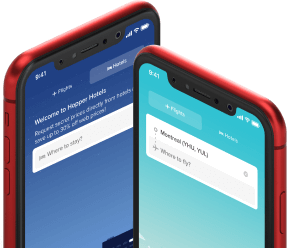Q3 Consumer Travel Index
Hopper’s Q3 2024 Consumer Travel Index: What to expect for airfare, hotel & rental car prices in the coming months

Hayley Berg - Tue Aug 20 2024
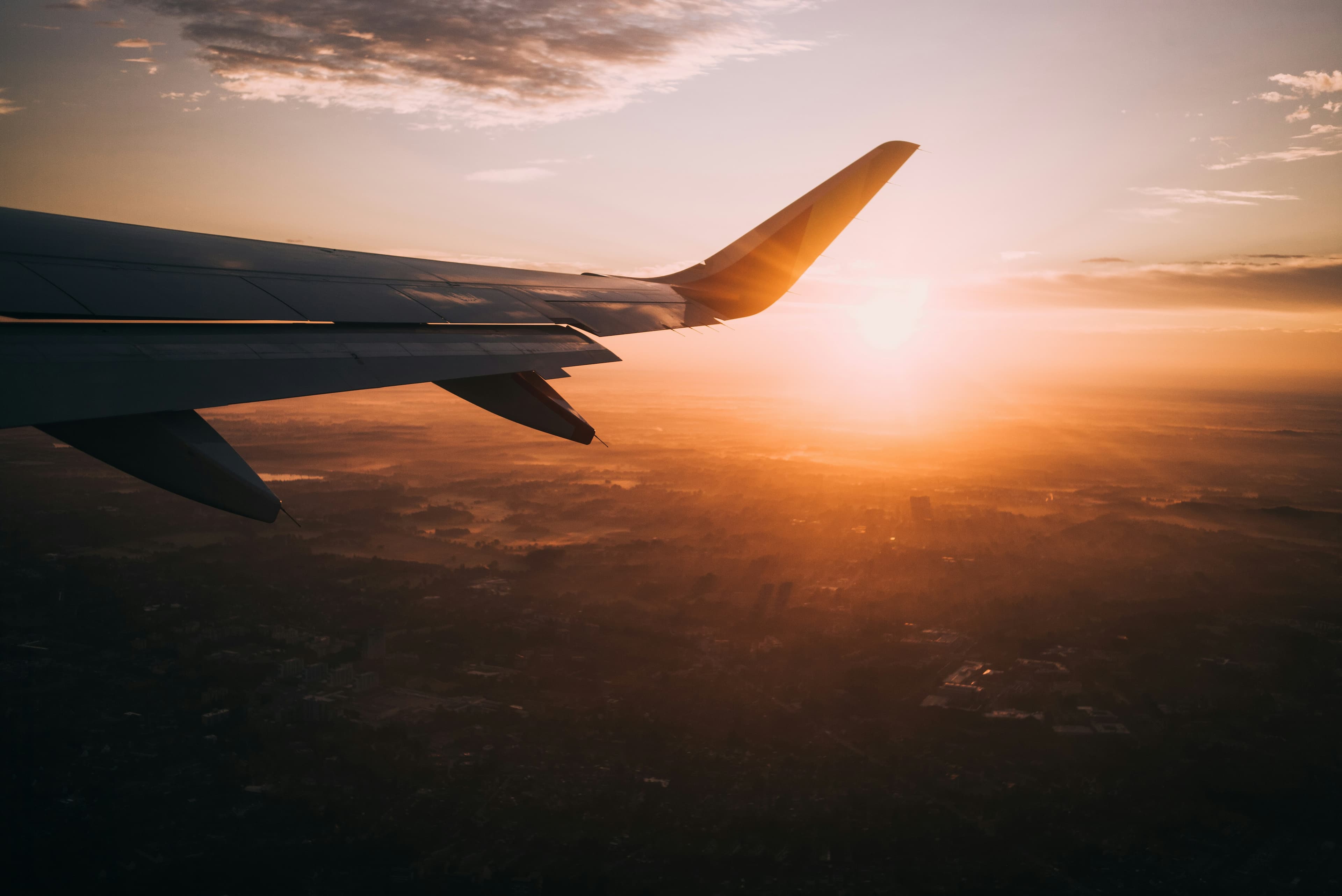
After a summer of travel packed with record breaking passenger traffic days, Americans are headed back to school and work as we move into the travel shoulder season. September and October are often called the fall shoulder season, seats between the peak summer travel months and the busy holiday travel season. Slower bookings during this season means lower prices and more deals are available for those travelers with flexibility to travel after the summer season ends.
93% of Hopper users say they plan to take a trip in the next 6 months, with about half headed onto a vacation and a further 27% visiting friends and relatives. Even as economic headwinds make headlines and recession fears swirl, Hopper users say they plan to continue spending on travel in the second half of this year. 86% of Hopper users planning to take a trip in the next 6 months say they are spending the same (31%) or even more (55%) on travel than they did last year.
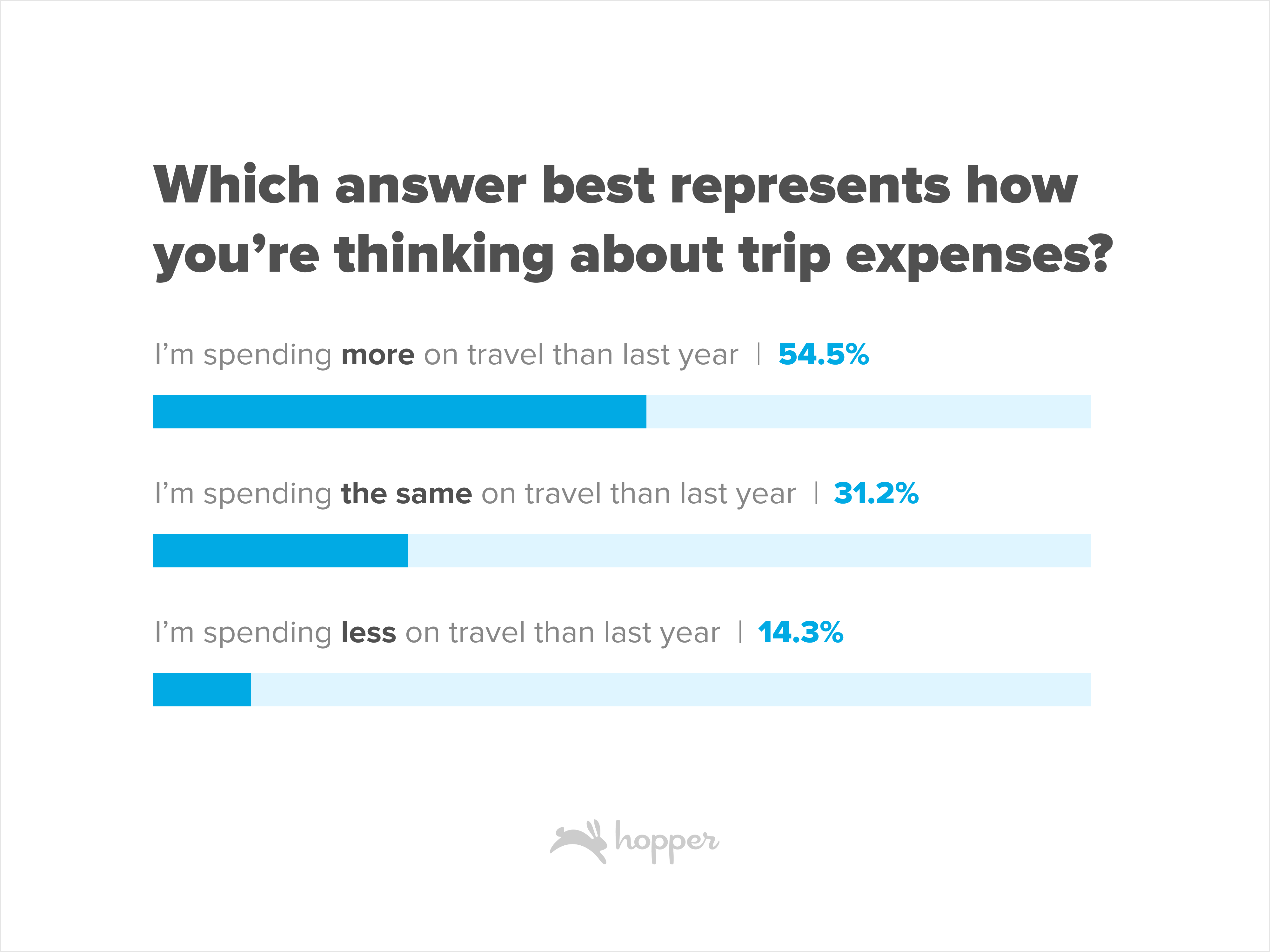
Airfare
6 Month Domestic Airfare Forecast
Airfare in September will remain lower than last year, averaging $240 per domestic round trip ticket. Fares will begin to rise in October as consumer demand shifts towards holiday trips for Thanksgiving and Christmas holidays, reaching a peak in December. Airfare will peak in the second week of December around $283 per round trip domestic ticket, before falling as low as $251 per ticket the new year as demand slumps seasonally in January following a busy holiday season. Overall, prices will remain just below 2023 levels for the remainder of the year.
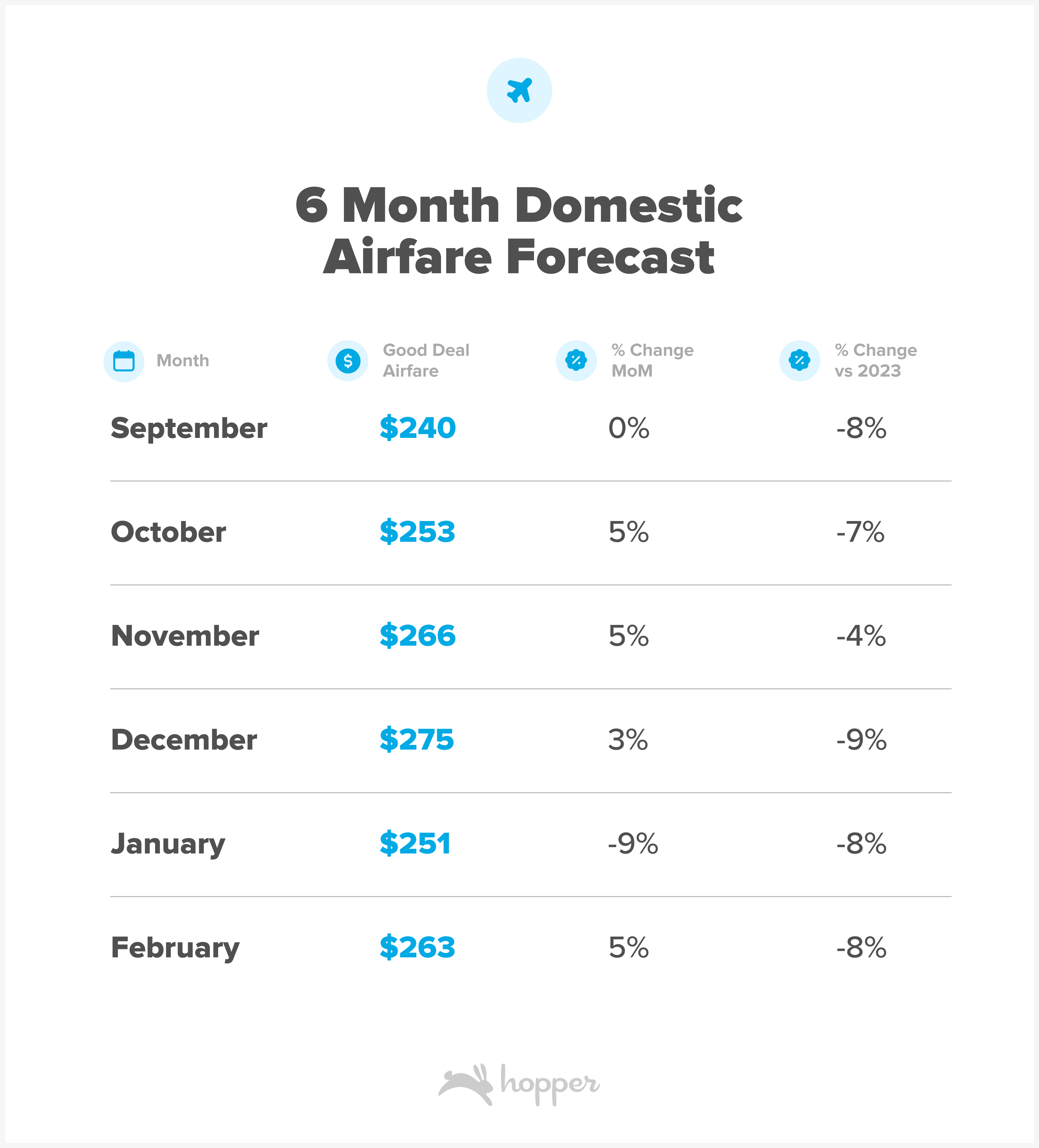
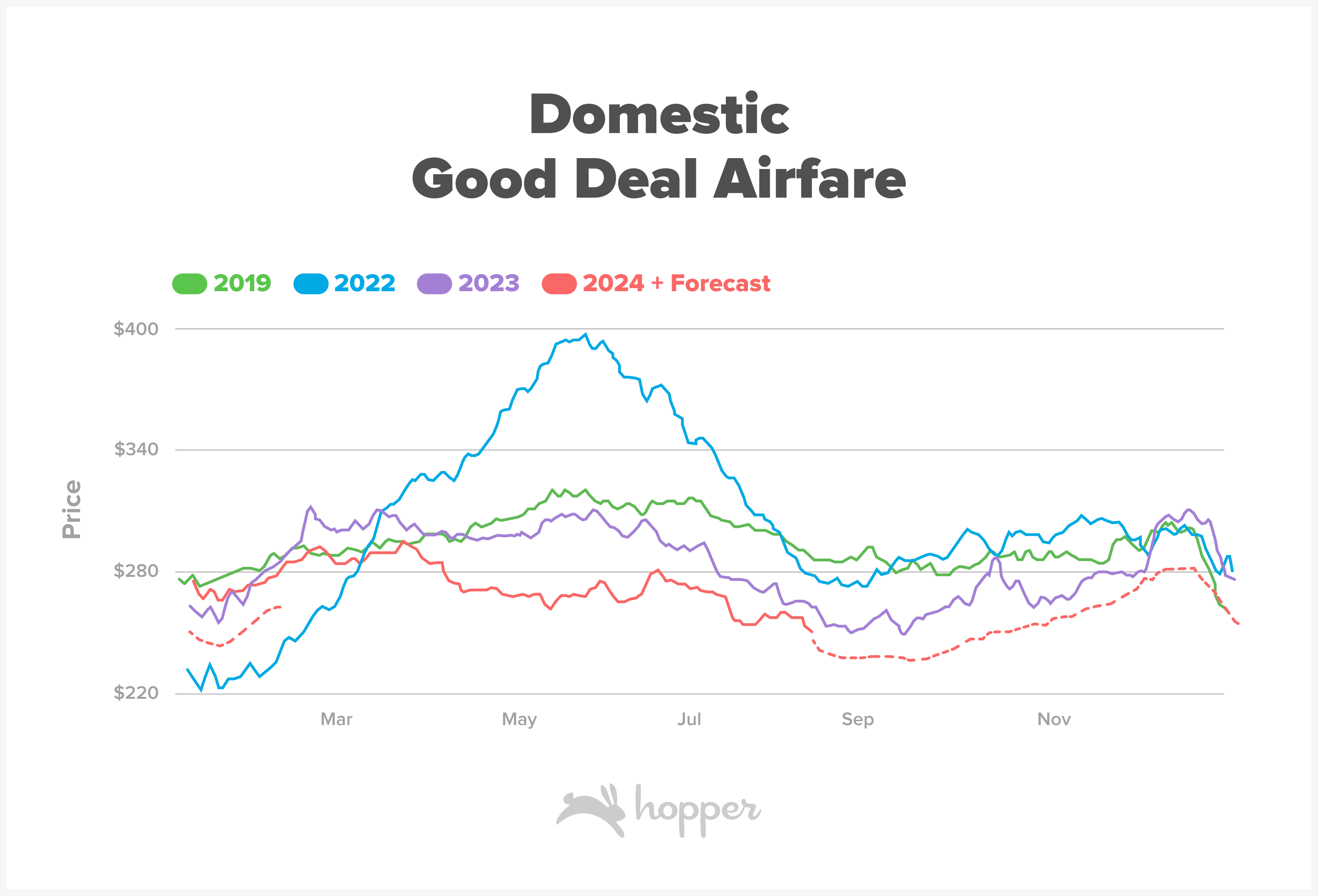
Lower prices on domestic routes this year have been driven in large part by the capacity gains airlines have posted throughout the year. Airlines flew an estimated 94.5 million seats in July of this year, up 6% from last year. Though airlines have worked hard to rebuild capacity following the pandemic, many have indicated they are moderating their capacity growth, or in some cases, paring back their capacity in the second half of the year. All three major US airlines reduced scheduled Q3 -Q4 capacity between the first week of July and the last week of July, as well as many lower cost carriers. These capacity reductions signal airlines are looking to rebalance supply and demand and in many cases, rebuild profitability, as ticket prices have remained at record lows even as demand remains strong.
International Airfare
Airfare to international destinations continues to improve following two years of bloated prices due to quickly recovering demand, high fuel prices and supply constraints. Fares this fall to Canada, the Antilles, Europe, South America and Oceania have all dropped below 2019 levels as supply and demand have rebalanced. Fares to Asia remain elevated as the region continues to see demand outpacing supply returns post pandemic.
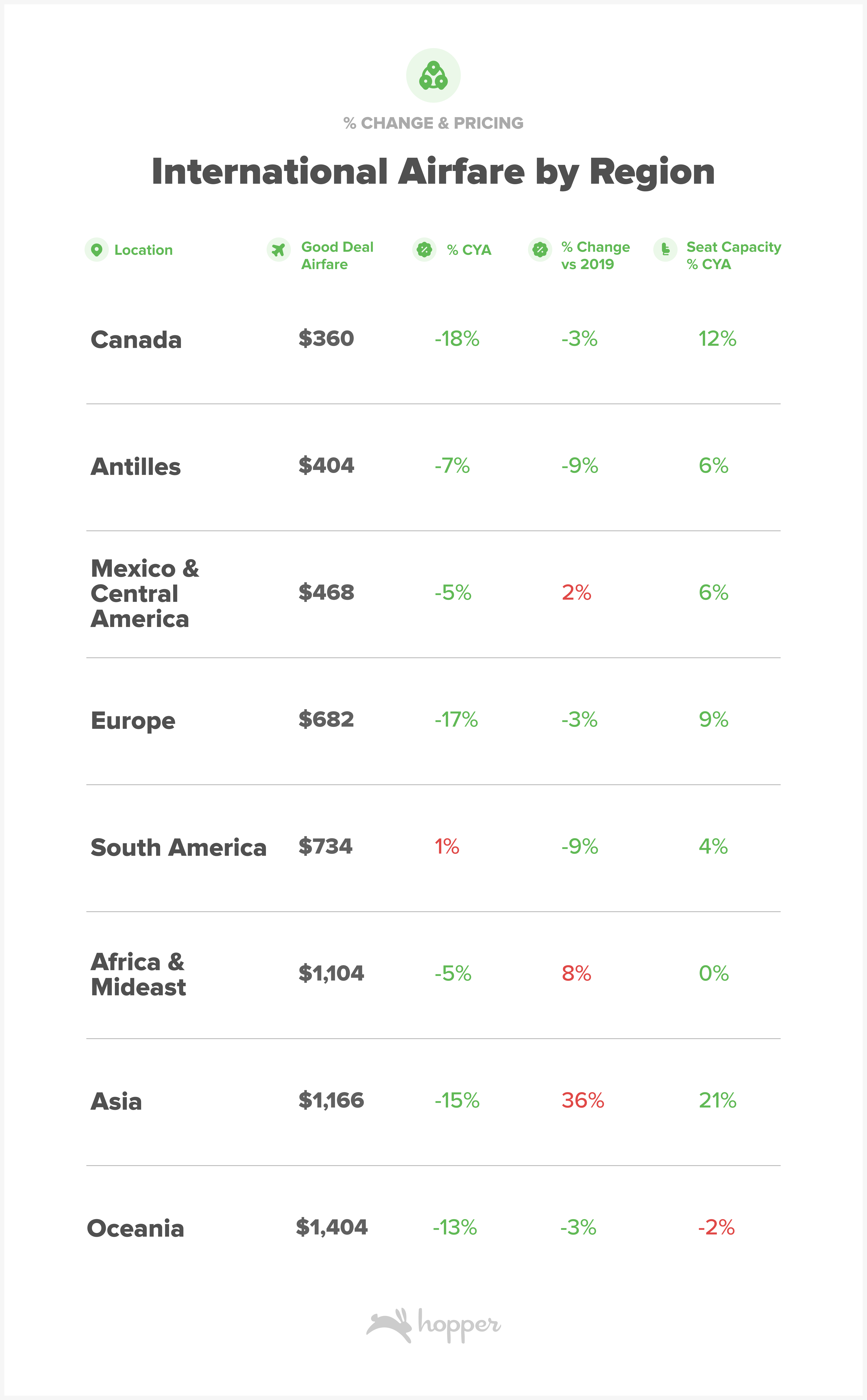
Though jet fuel prices remain 18% higher than at this time in 2019, prices have dropped from last year. Today fuel prices are averaging $2.31 per gallon, down 13.5% from this time last year. Prices have been in relatively steady decline for the last 2+ years as demand has normalized following the pandemic and subsequent rebuilding of airline networks. The continued improvement in fuel prices will support continued lower airfare prices, especially as many airlines continue to hedge fuel post pandemic.
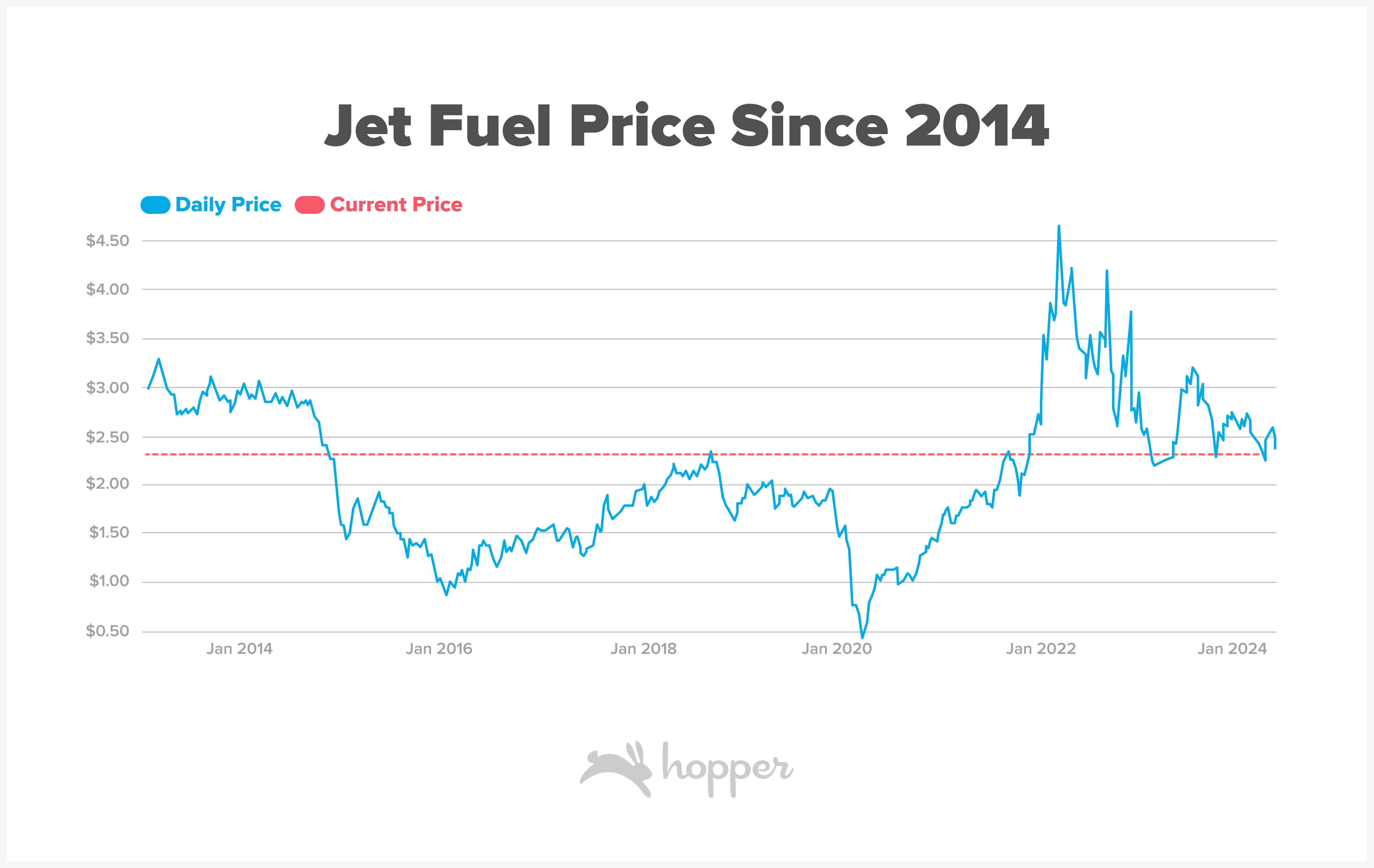
Rental Cars
With gasoline prices down almost 10% compared to August of last year, travelers hitting the roads this fall for getaways will get more bang for their buck when planning a road trip. Car rentals are averaging $44 per day with most travelers looking for 4-day rentals. Prices are in line with 2023 levels, down just 2% lower from last year when prices averaged $45 per day. Prices have improved dramatically from 2021, when pandemic fears and low supply of rental cars results in record-high daily rates. Top destinations for rental cars are warm weather cities like Los Angeles, Orlando, Las Vegas and Miami and as well as some east coast destinations like Boston, Philadelphia and Brooklyn, New York.
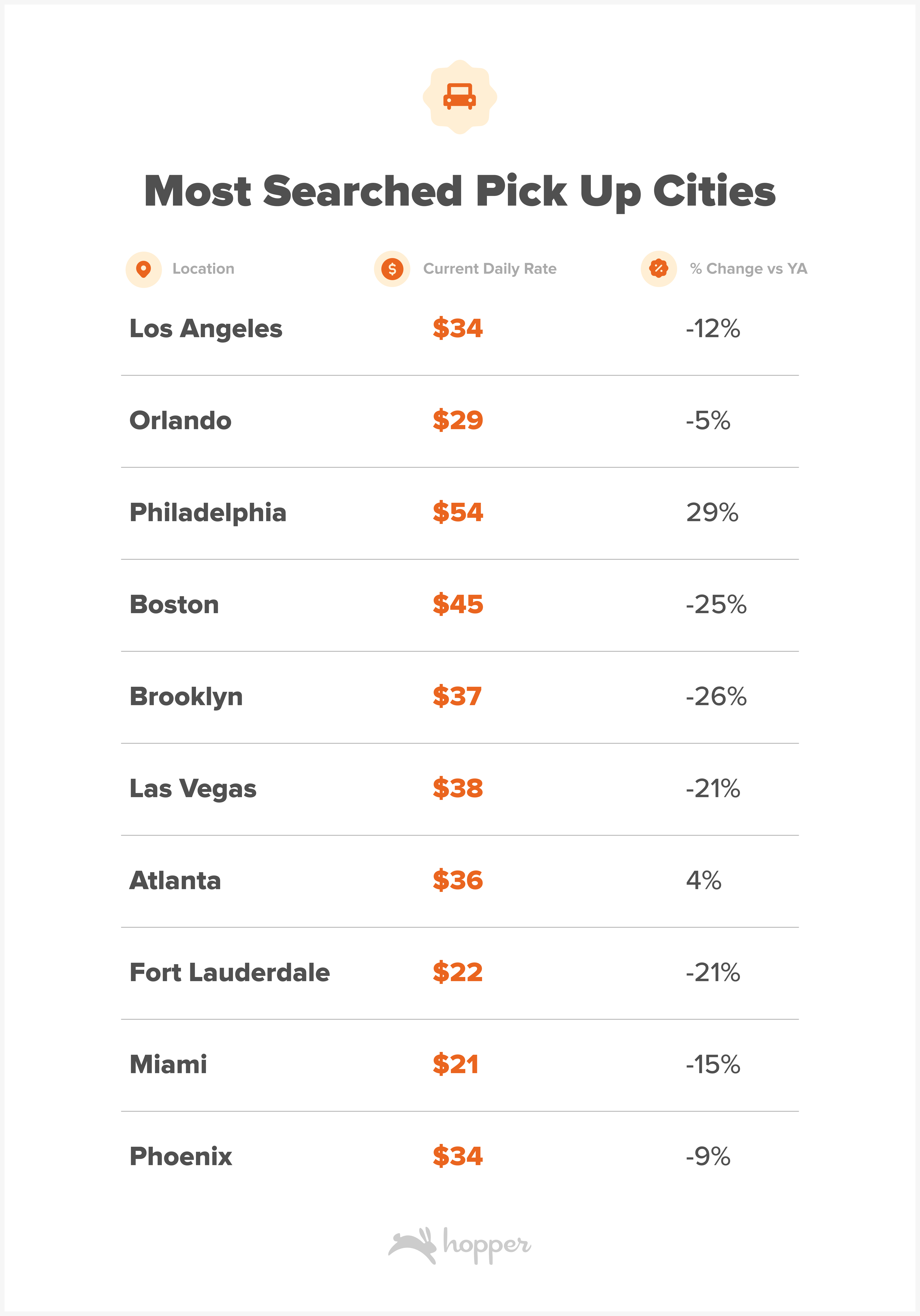
Accommodations
Demand for hotel stays will flow through to the second half of this year, with 61% of Americans taking a trip in the next 6 months planning to stay at a hotel while on their trips. Hotel stays in the US are averaging $161 per night, up slightly compared to this time last year (COSTAR). Nightly rates at hotels across the US have remained high following the pandemic, with prices at the end of summer in 2019 averaging closer to $131 per night, or about $30 per night less than current rates.
Top destinations for stays include major US cities like Las Vegas, New York City and Miami. International demand for accommodations is focused on European cities that are extremely popular at this time of year. Londo, Paris, Madrid, Rome and Barcelona top the list for popular cities for accommodations internationally.
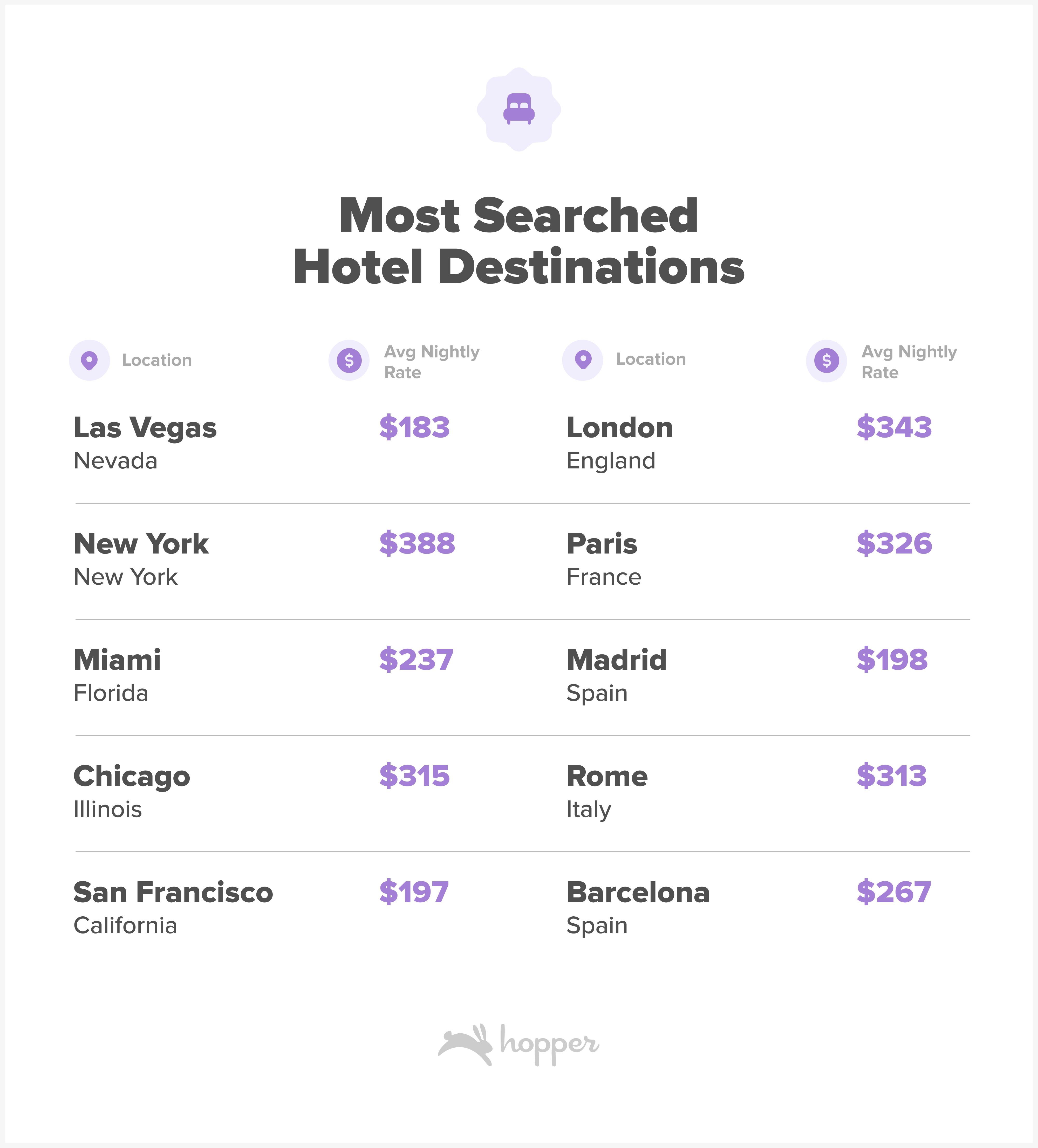
Trending Destinations
Trending Destinations for Domestic Trips
Domestic trending destinations lean heavily towards areas with national parks and rich offerings of outdoor activities. Top destinations trending headed into this fall include Spokane, Bangor, Jackson, Portland, Knoxville and Asheville, all in areas known for incredible outdoor opportunities.
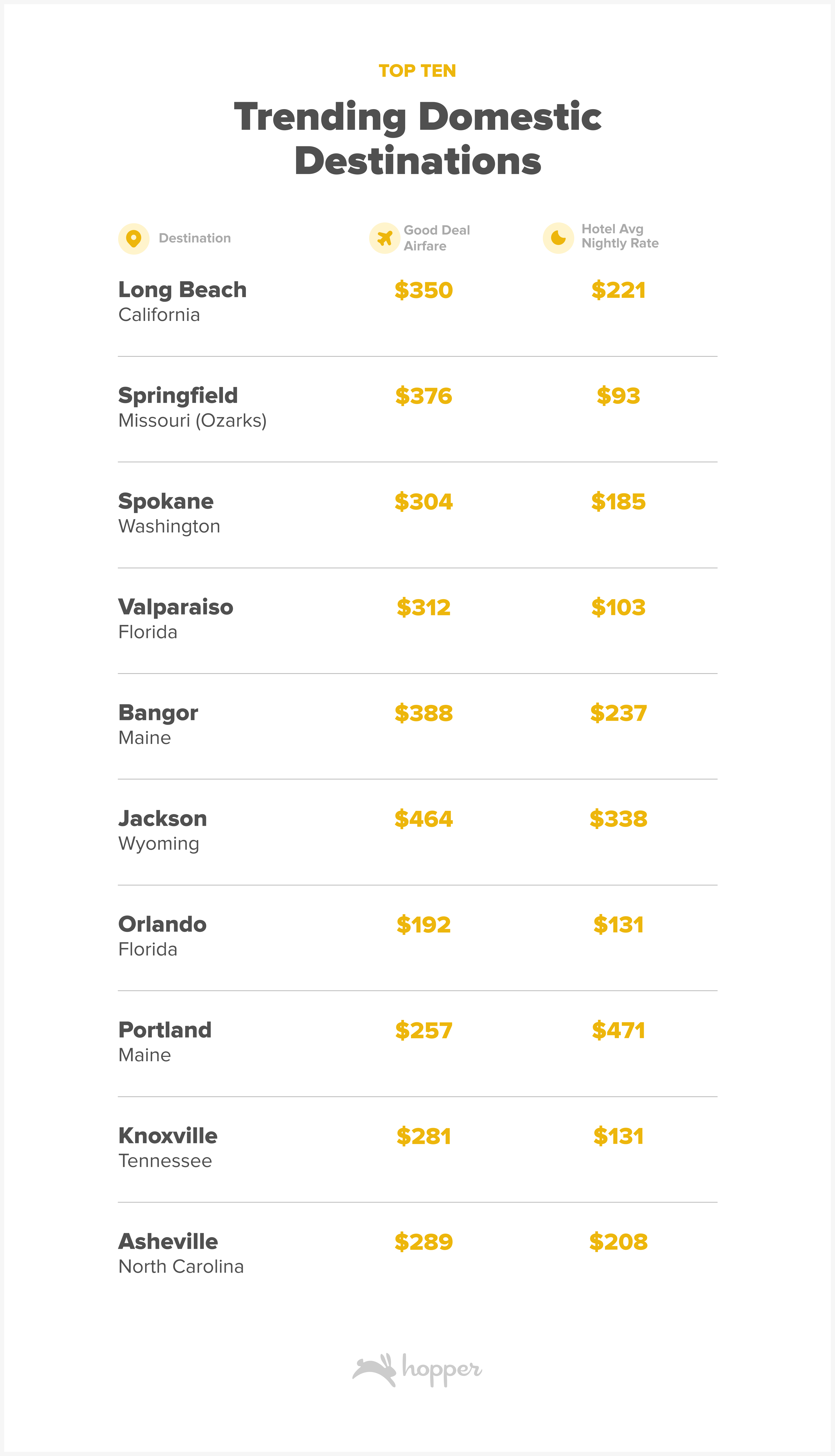
Trending Destinations for International Trips
Asia remains top of mind for American travelers, especially as the busy summer travel season grows closer. Shanghai and Osaka are the top two trending destinations for international travel right now, even with airfares as high as $1,364 per ticket. Other trending international destinations include European classics like Nice, Munich, Zurich, Vienna, Venice and Madrid.
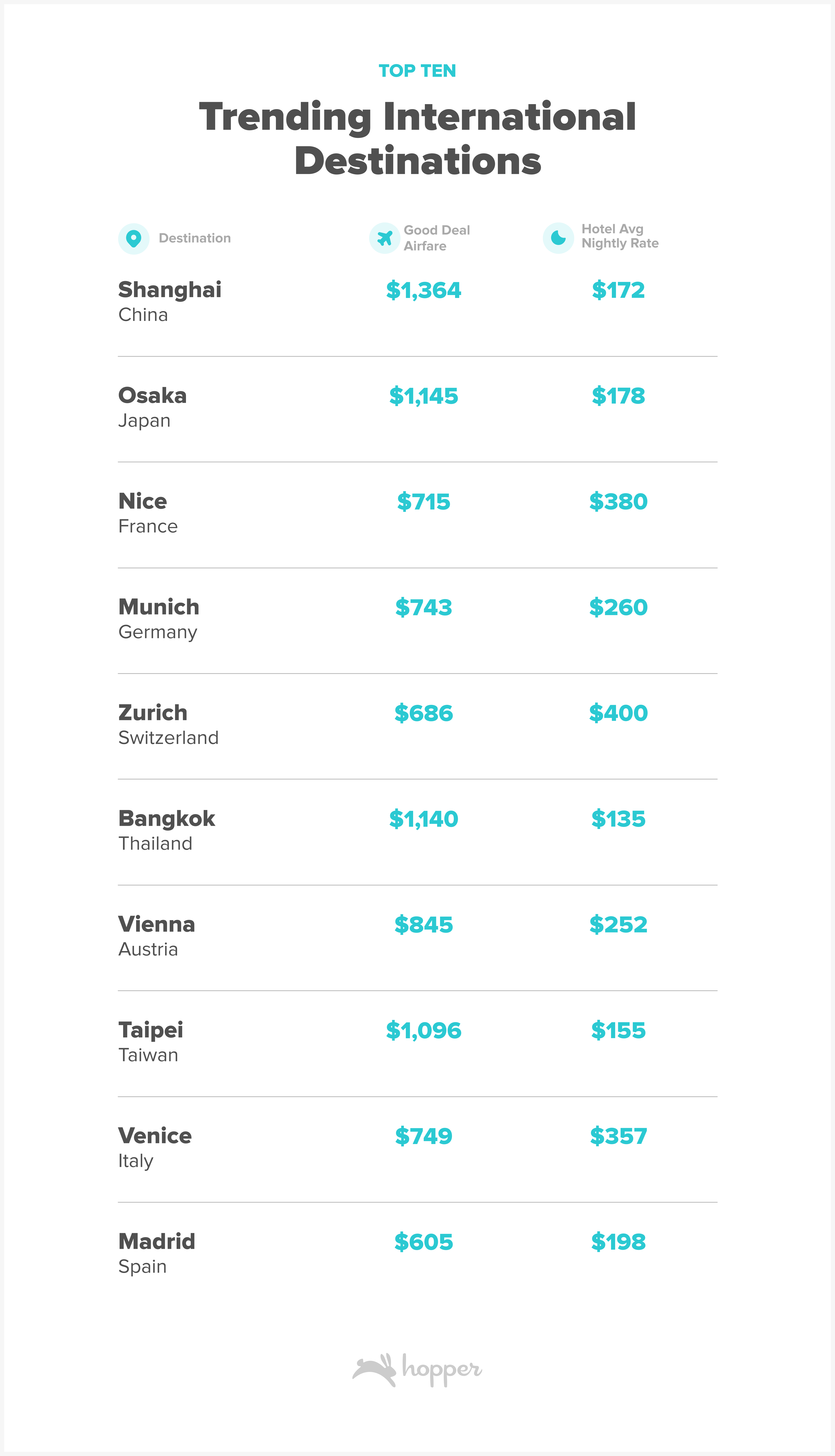
Travel Disruption
The summer travel season has been interrupted this year by everything from inclement weather to technology meltdowns. The daily flight cancellation rate in July peaked at 13% during the Crowdstrike outage, while the delay rate reached 47% on a single day. In August, tropical storm Debby drove delays and cancellations across the eastern seaboard as she dropped incredible rain volumes on coastal cities packed with summer vacationers.
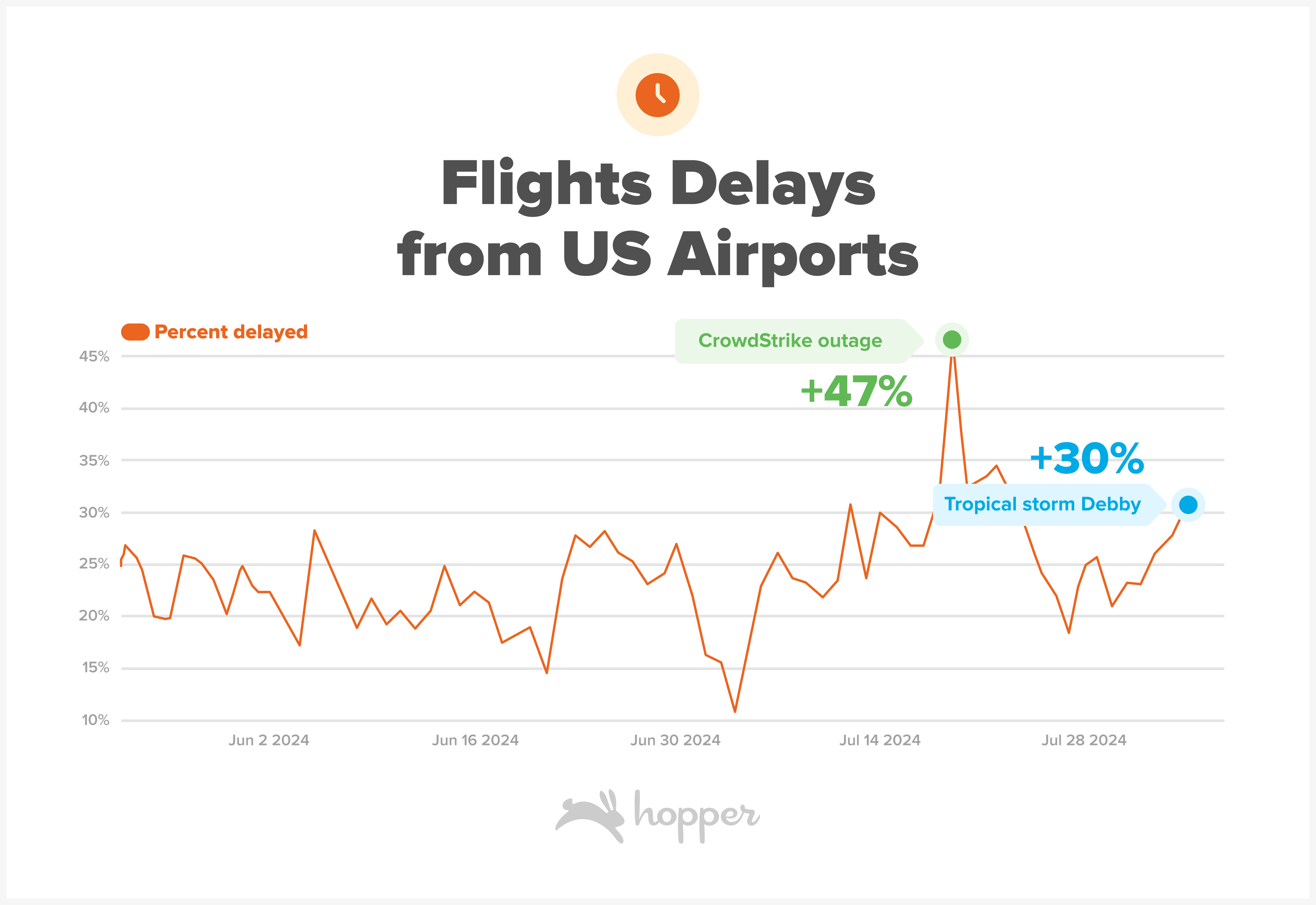
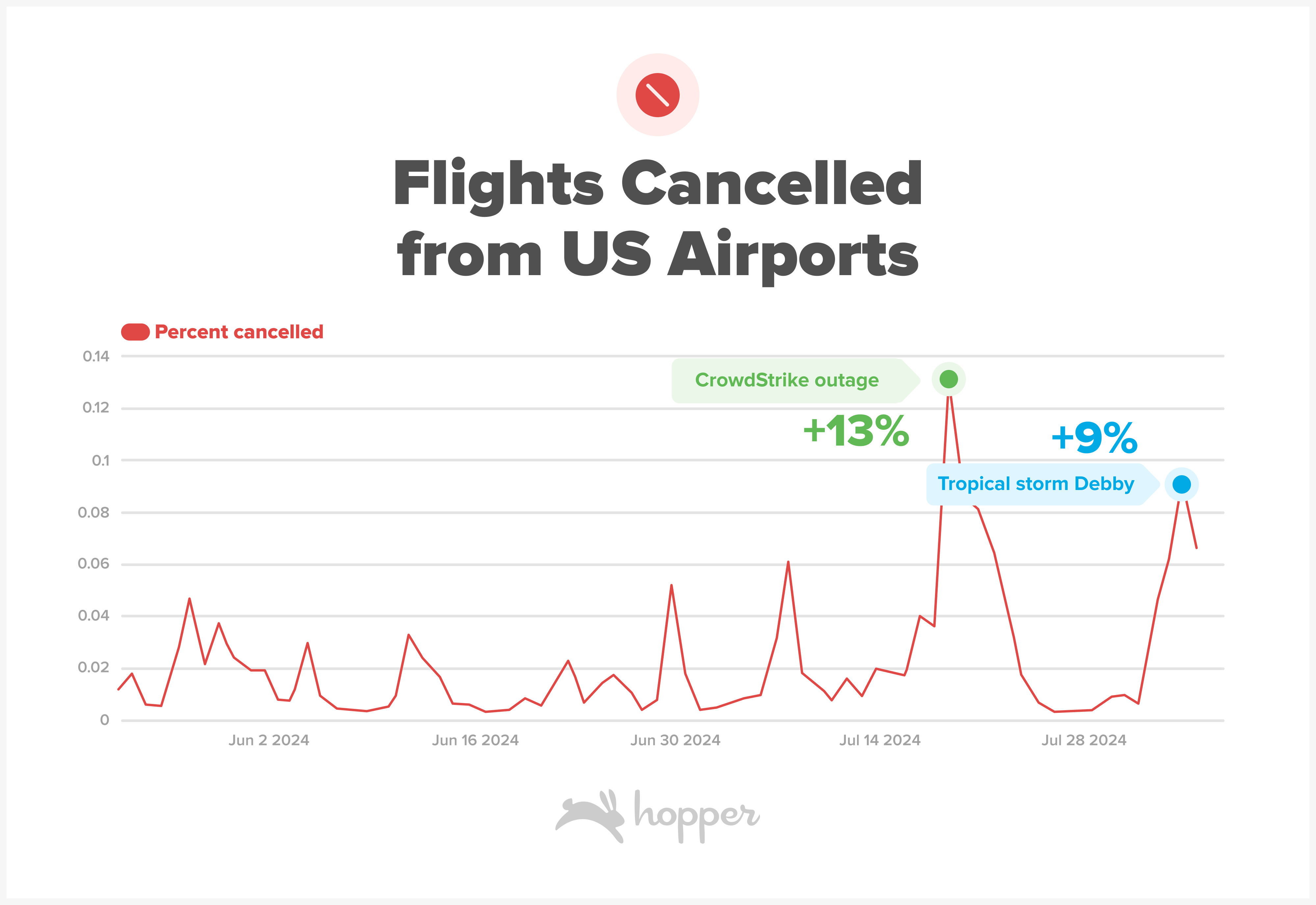
You can’t prevent disruption but you can prepare for it! Whether you’re in the planning process, headed out for your trip or already stranded, here are our tips for making your summer travel more seamless.
When you’re planning
Add Trip Protection: For the busy summer season especially, it's a smart idea to add trip protection to your travel plans. Some travel providers, like Hopper, offer Disruption Assistance which allows you to rebook a new flight immediately, regardless of carrier, if you’re delayed, canceled by the airline or you miss a connection. In a recent survey of Hopper travelers who experienced disruptions, only 24% of those who were canceled or missed a connection were rebooked on a flight for the same day. 1 in 4 of these travelers were never rebooked and had to cancel their trips! Hopper’s Disruption Assistance is a foolproof way to ensure you get to your destination as quickly as possible, if your trip gets disrupted! Today, 1 in 5 Hopper customers add Disruption Assistance when they book, to protect their purchase and experience.
Book with flexibility: With recent disruptions at the airport, travelers may want to consider adding extra flexibility to their upcoming travel plans in case they want to make last minute changes. Travelers should take advantage of plans like Cancel for Any Reason or Change for Any Reason available through some airlines and Hopper. With these plans, you can instantly cancel or change your itinerary without incurring any additional fees.
Take the first flight of the day: In general, flights departing after 9am are 2X more likely to be delayed than departures scheduled between 5-8am. To avoid travel disruption, fly as early in the morning as possible.
Book a long enough layover: Though you may be tempted to book the trip with the shortest travel time, beware of booking too short of a layover. Keep in mind that for international flights you may need to pass through security or passport control before getting onto your next leg of the trip. Be sure to include enough time for you to deplane, go through any potential security or control and walk to your next gate and board your next flight. For domestic flights we recommend at minimum a 45 minute layover and at least 90 minutes for international trips.
Build in a buffer day: Don’t leave it to chance! Particularly for big events or major trips, it's always better to be safe by baking in an extra day to get to your destination. This way you’ll have some wiggle room, should any delays or disruptions interfere with your travel plans.
Day Of Trip
Sign up for alerts & check flight status before you go to the airport: You’ll want to know about delays and cancellations as early as possible. On most U.S. carriers, passengers can sign up for text, email, and/or in-app notifications about any changes to their itinerary including delay and cancellations.
Know what options you have available: Know what other flights are headed to your destination the same day as your trip in case you’re disrupted and need to get on another flight. Be sure to check airline policies, many carriers will waive change fees if there is a weather advisory or give compensation/travel credit if your flight is canceled within a few hours of departure.
Make sure you arrive at the airport with a fully charged smart phone, and keep a charging cord with you! You may need to stay on the phone or use the app to make changes to your trip.
What to do if you’re stranded
Multitask - Get in line to speak with an airline representative at the same time you call the customer support center: During a major disruption there can be hundreds of other travelers trying to get support from airline representatives at one time. Get in line to speak with an agent in your terminal at the same time that you get on the phone to call the support center. Oftentimes an agent can reach you in the phone queue faster than an agent at the airport!
Skip the airport hotel: Airport hotels are often expensive given their convenience, and are likely to sell out during busy travel periods or when disruptions like bad weather hit a region. If you need to find a place to stay in a pinch, look beyond the airport for lower prices and more availability. Check the Hopper app for last minute deals on hotel stays in your area for the most savings.
Consider alternate airports: If you’re flying out of a major city or region with a few airport options, check departing flights from regional airports. In New York for example, you can check JFK, LGA and EWR, but also consider airports close to the area like Westchester or Islip.
Consider driving: When disruptions impact many flights at a single airport or across the US it can sometimes be challenging for airlines to rebook customers within a reasonable amount of time. This could mean you’re stranded for hours or days longer than intended. Depending on your destination, consider renting a car and driving the distance to your destination, or to an airport which does have a flight available for you to rebook.
Get the Hopper app to find the best deals.
You could save up to 40% on your next flight!
